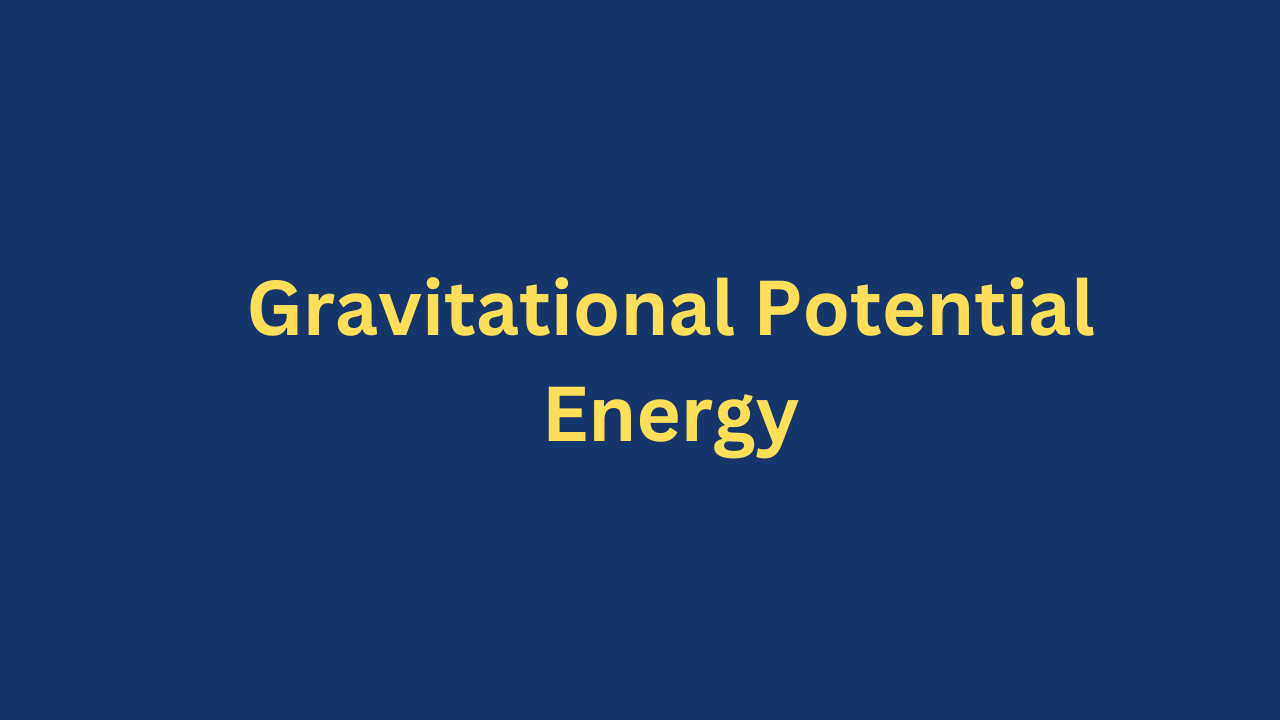Energy is the capacity or ability for doing work. You must have energy to accomplish work. To do 100 Joules of work, you must expend 100 Joules of energy. There basically two main types of energy, kinetic and potential energy. Energy is measure in Joules (J).
Kinetic Energy (K)
Kinetic energy is energy of motion. The kinetic energy of an object is the energy it possesses because of its motion. The kinetic energy of a body of mass 𝑚, moving with velocity 𝑣 is given by Kinetic energy,
$$K=\frac{1}{2}mv^2$$
Kinetic energy is an expression of the fact that a moving object can do work on anything it hits; it quantifies the amount of work the object could do as a result of its motion.
Potential Energy (P)
Potential energy is energy that is stored. There are various types of stored or potential energy. Chemical energy from a battery is a form of potential energy, elastic energy in a stretched rubber band is a form of potential energy too. The most commonly referred to form of potential energy in physics is that of a gravitational potential energy. Gravitational potential energy is the energy that is stored due to an object’s position. It is dependent on the mass 𝑚 of the object, the height ℎ of the object above the ground surface, and the acceleration due to gravity, 𝑔.
Thus, Potential energy,
$$P=𝑚𝑔ℎ$$
Mechanical Energy (E)
In the process of doing work, the object that is doing the work exchanges energy with the object upon which the work is done. When the work is done upon the object, that object gains energy. The energy acquired by the objects upon which work is done is known as mechanical energy. Mechanical energy is the energy that is possessed by an object due to its motion and/or due to its position.
$$\text{Mechanical energy,E = Kinetic energy + Potential energy}$$
$$E=K + P$$
the principle of conservation of mechanical energy sates that the total mechanical energy in any given system remains constant as long as the forces acting are conservative forces.
Thus,
$$
\frac{1}{2}mv_i^2 + mgh_i =\frac{1}{2}mv_f^2 + mgh_f
$$
Work -Energy Theorem
If you push a stationary car, the car will start moving. That means, the car has gained some velocity. We say that the car has gained some kinetic energy. According to the work energy theorem, this work is converted into the kinetic energy of the car. The work – energy theorem gives the relationship between work done and kinetic energy. For the sake of simplicity, we will consider the case in which the resultant force 𝐹 is constant in both magnitude and direction and is parallel to the velocity of the particle as shown in figure below.

The particle is moving with constant acceleration 𝑎 along a straight line. The relationship between the net force and the acceleration is given by the equation 𝐹 = 𝑚𝑎 (Newton’s second law), and the particle’s displacement 𝑥, can be determined from the equation:
$$
v_f^2=v_i^2 + 2ax
$$
$$
x = \frac{v_f^2-v_i^2}{2a} \: \: \: \: \: (1)
$$
The work of the net force is calculated as the product of its magnitude (𝐹=𝑚𝑎) and the particle’s displacement 𝑥. Substituting equation (1) above equations yields:
$$
\text{Work done} = Fx = ma \left ( \frac{v_f^2-v_i^2}{2a}\right )
$$
$$
=\frac{1}{2}mv_f^2-\frac{1}{2}mv_i^2 = \text{change in kinetic energy}
$$
Thus, the work done by the net force on an object equals the change in the object’s kinetic energy.
Power
We can define power as the rate of doing work, and it is the amount of energy consumed per unit of time. Therefore, it can be calculated by dividing work done by time. The formula for power is given below.
$$\text{Power,P} = \frac{\text{work done}}{\text{time}}=\frac{W}{t}$$
Where, 𝑃 is the power, 𝑊 is the work done and 𝑡 is the time taken. As power doesn’t have any direction, it is a scalar quantity. The SI unit of power is Joules per Second (J/s), which is termed as Watt. Watt can be defined as the power needed to do one joule of work in one second. The unit Watt is dedicated in honour of Sir James Watt, the developer of the steam engine. One common unit of energy is the kilowatt-hour (kWh). If we are using one kW of power, a kWh of energy will last one hour. Horsepower is another unit of measurement. One horsepower is equivalent to 735.7 Watts.
From the definition of work done,
$$W = Fx $$
$$\text{Power} = \frac{W}{t}=\frac{Fx}{t}=Fv$$
Where 𝑣 is the velocity of the body. When the force 𝐹 acting on the body is not in the direction of motion, the power can be expressed as
$$\text{Power} =\vec{F} \cdot \vec{v}=Fvcos\theta$$



